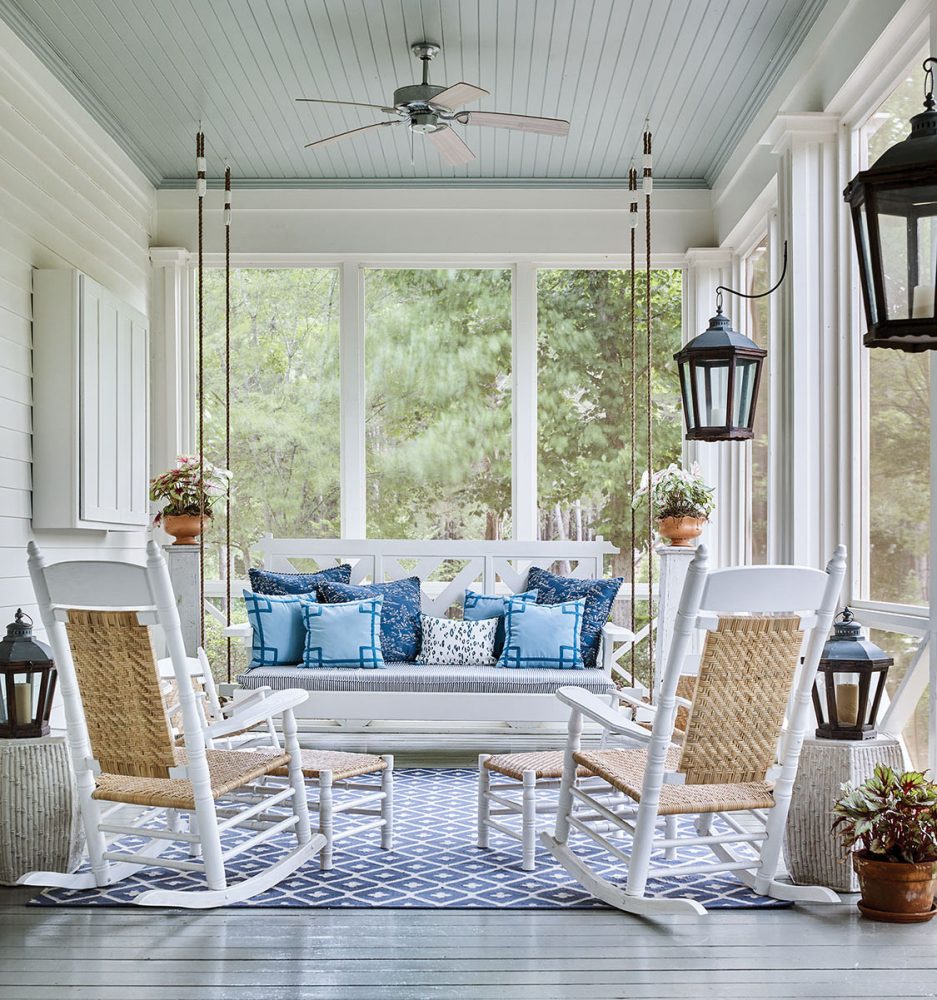
From grand installations to small arrangements at home, floral foam has been a mainstay of floral design since 1954 when V.L. Smithers of Smithers-Oasis invented it; however, times and trends have changed. Today’s floral designers can choose from many foam alternatives, all of which leave a smaller footprint on the environment than foam while still supporting both traditional and modern designs.
ALTERNATIVES TO FLORAL FOAM
In this guide, you’ll learn about these foam-free mechanics:
HOLLY PILLOW
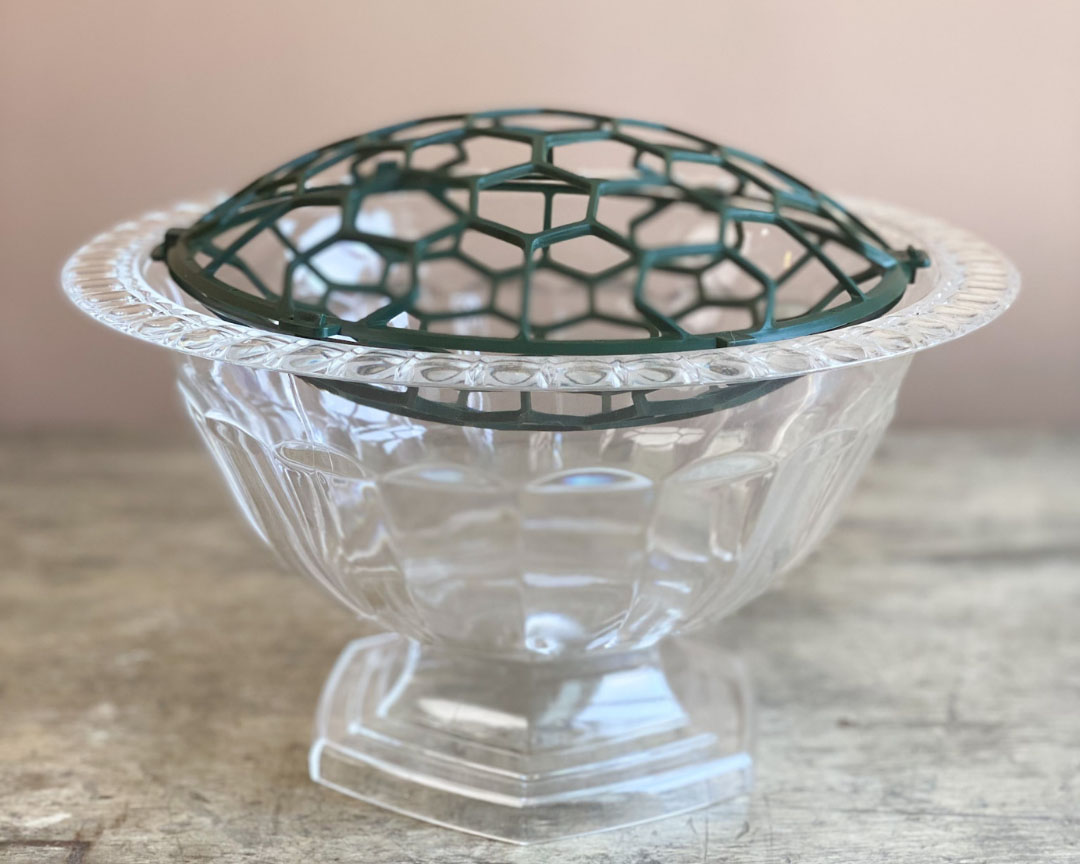
Photo courtesy of Hope Flower Farm
The Holly Pillow shown with the Abby Compote, both from Syndicate Sales through Hope Flower Farm
The Holly Pillow is a convenient, reusable floral foam alternative designed by Holly Heider Chapple. As founder of Holly Heider Chapple Flowers in Leesburg, Virginia, and Hope Flower Farm in nearby Waterford, Holly wears many hats, including designer of a line of floral mechanics and vessels for Syndicate Sales.
“First and foremost, blooms respond best to being directly in water. The Holly Pillow is reusable and recyclable and does not contain microplastics, one of the main issues with floral foam,” Holly says. “Once created, the entire design can easily be lifted from the vase and moved to another vessel for a change in use or look without compromising the integrity of the arrangement. It also makes it easy to refresh water and recut stems.”
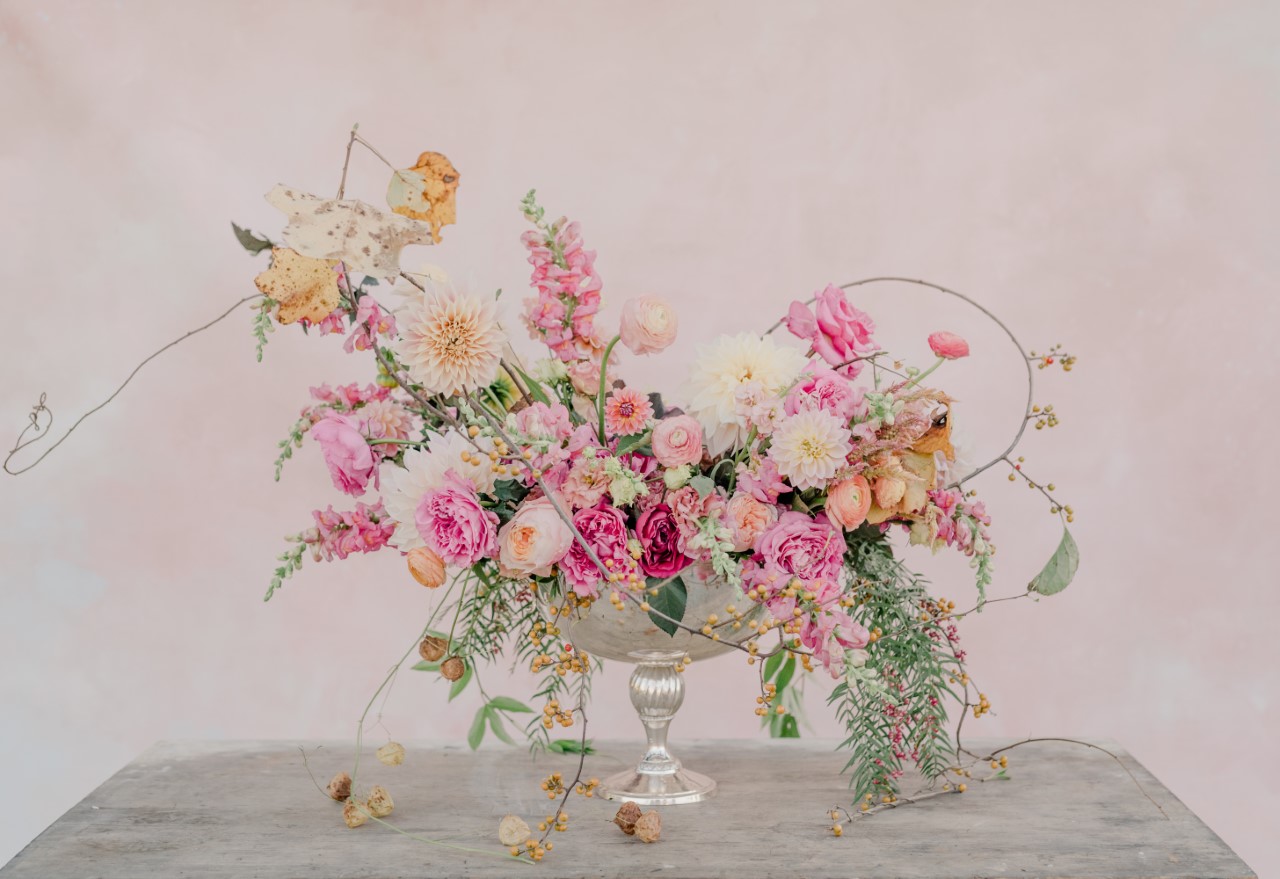
Photo courtesy of Holly Heider Chapple
An arrangement created using the Holly Pillow. Floral design by Holly Heider Chapple
The product idea came to fruition quite by accident, Holly says. “After teaching a bridal bouquet session in London, we moved to a tablescape that was being photographed. We borrowed vessels from the sundries merchant, and I didn’t want to scratch the vases with chicken wire or damage them with tape or foam. I suggested we create a larger egg form that rested on the top of the merchant’s vases, and we immediately called the shape a pillow. The results were lovely.”
Holly explains that after the shoot, they realized the arrangements were entirely intact with the vessels in perfect condition. “The benefits of designing like this continued to unfold,” she says. “Today, most of my centerpieces are delivered in the pillow. This allows me to quickly refill vases with water upon arriving at the venue. By using the pillow, I have cut back massively on my use of foam.”
FLORAGUPPY

Photo courtesy of @mabelmfloralacademy
Created by Canada-based James Wong, FloraGUPPY is described as “a 100-percent reusable and recyclable flower arrangement holder made from malleable plastic.” This foam alternative is also intended to help reduce the cost and time of floral arranging. Thanks to its flexible form, one size adapts to multiple vessel shapes and sizes.
Floral designer Mabel Maposa of Mabel M Florals in Cape Town, South Africa, says, “We love the FloraGUPPY because of its reusable capabilities. It’s one of our favorite floral foam alternatives when we are designing flower arrangements. One of its best properties is that it makes it easy to change water in the vase without destroying the shape of your arrangement. When you lift the flowers, they are held together by the FloraGUPPY, which is a big advantage when transporting arrangements during an event.”
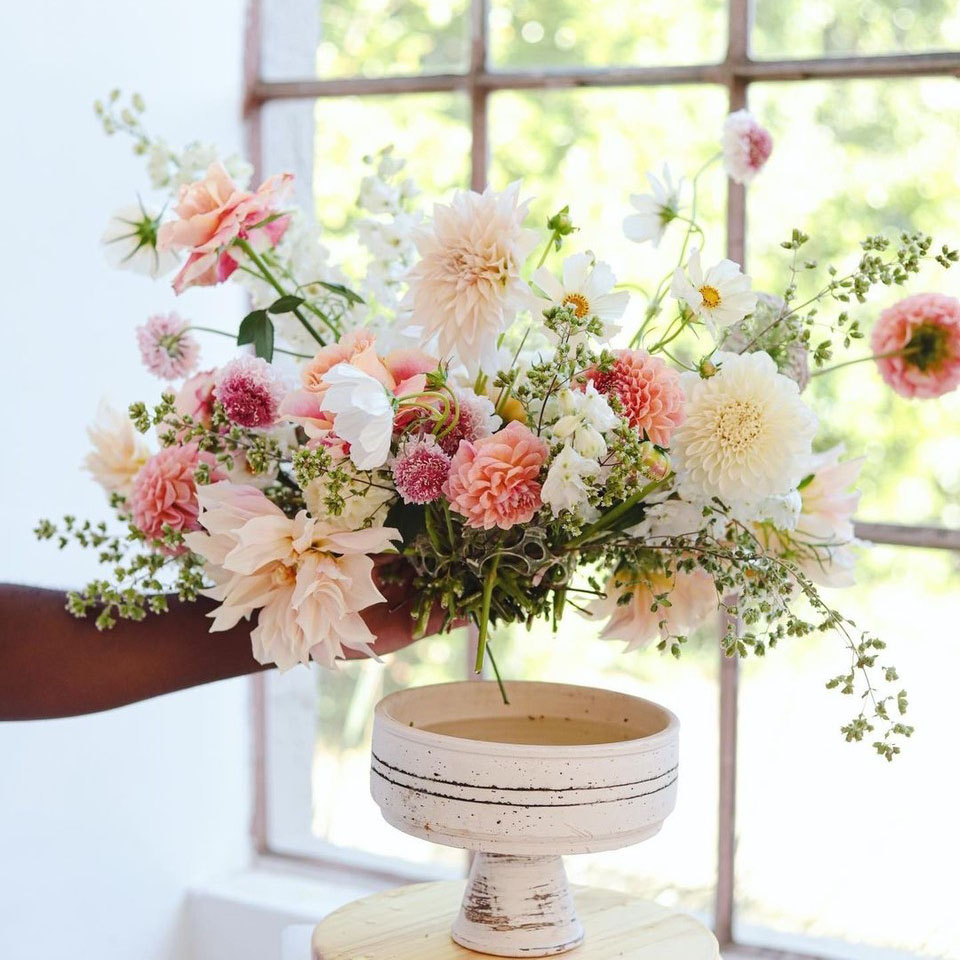
Photo courtesy of @mabelmfloralacademy
Mabel demonstrates moving an arrangement designed in the FloraGUPPY.
SIDEAU FROM AGRA-WOOL INTERNATIONAL
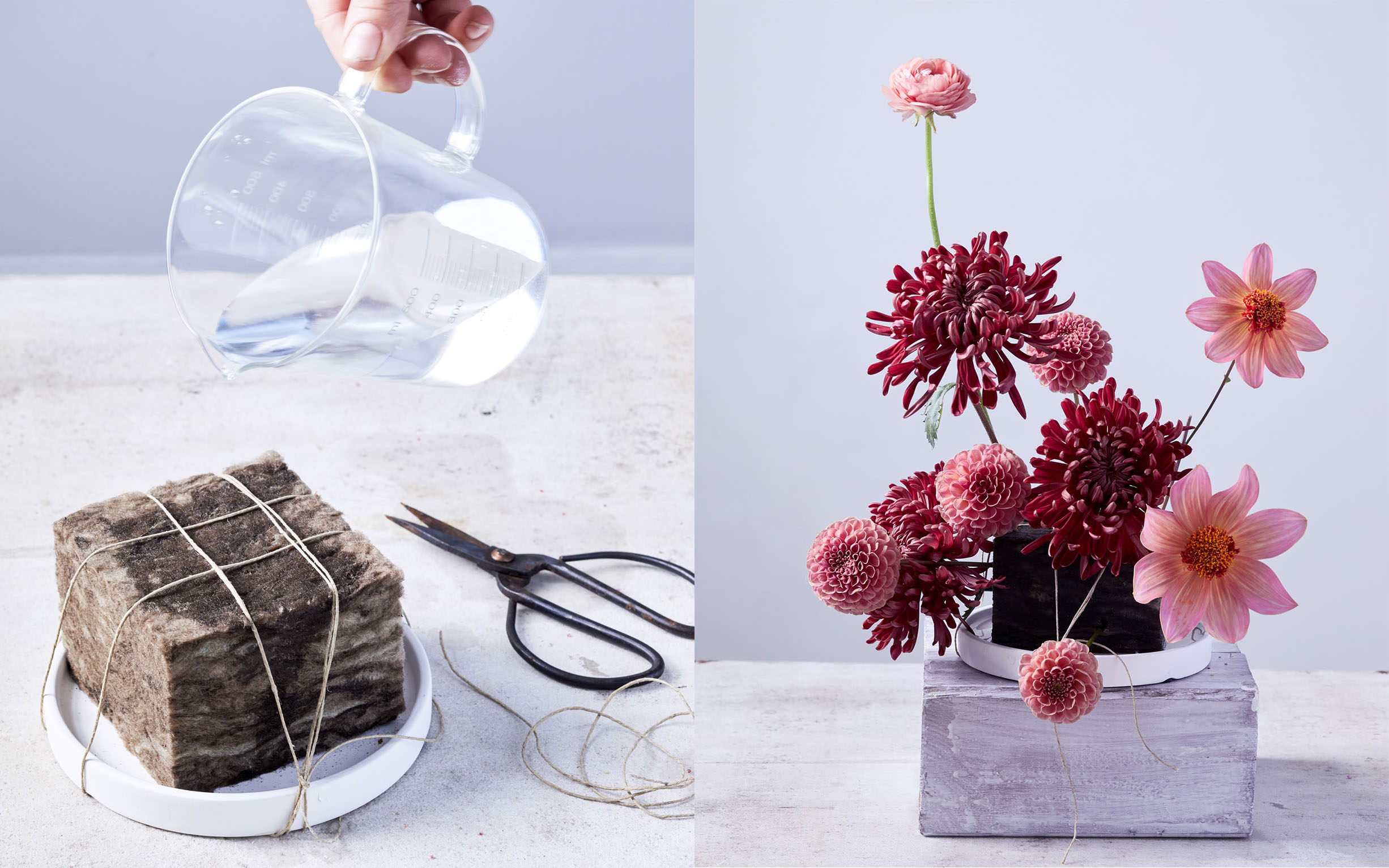
Photo by Dana Gallagher
Ingrid Carozzi offers a tutorial using Agra-Wool’s floral foam alternative in her book Flowers by Design: Creating Arrangements for Your Space (Abrams, 2021).
This 100-percent biodegradable floral foam alternative from Netherlands-based Agra-Wool International is available in the U.S. through New Age Floral. Made from spun fibers of basalt (a volcanic rock) and a plant-based binder, this product, Agra-Wool claims, “absorbs and holds water better than traditional foam.” These factors have led to increased popularity among environmentally conscious floral designers looking for a foam-free option that can serve as a water source when it’s not possible to use a watertight vessel.

Photo by Dana Gallagher
Ingrid’s completed Sideau arrangement (left) from her book Flowers by Design (right).
Among those experimenting with this material, along with many other foam-free methods, is Ingrid Carozzi, owner and creative director at Tin Can Studios in New York and author of Handpicked and Flowers by Design. “Sideau is quite easy to use if done properly as you have more control,” she says. “We have used it for arbors and installations on multiple occasions.”
Ingrid adds, “It’s definitely a bit harder to work with than floral foam, as the stems don’t go in as smoothly, but we tell ourselves it’s worth the extra time as it’s much better for our planet. You can always poke a hole for your stems, but in installs, once you have a lot of product in the block already, it gets a bit more challenging.”
OSHUNPOUCH

Photo courtesy of New Age Floral
This newcomer on the market is the brainchild of Kirsten Vandijk of Sudbury, Massachusetts. Recognizing the need for sustainable floristry supplies, the veteran floral designer opened her e-commerce store, New Age Floral, in 2020. A year later, she has added inventor to her resume with her patent-pending OshunPouch, “a 100% biodegradable and home compostable stabilizing hydration mechanic with superior insertion hold.”
The benefits are manyfold. The water-holding medium is renewable coir—the fiber from the outer shell of the coconut, which is commonly used to amend garden soil. Because the pouches expand to full size only when hydrated for use, they are practical to ship and store. Finally, the sleek pouch “fades into the background,” says Kirsten, “allowing for strategic placement of materials in an innovative, soft, and workable form.”
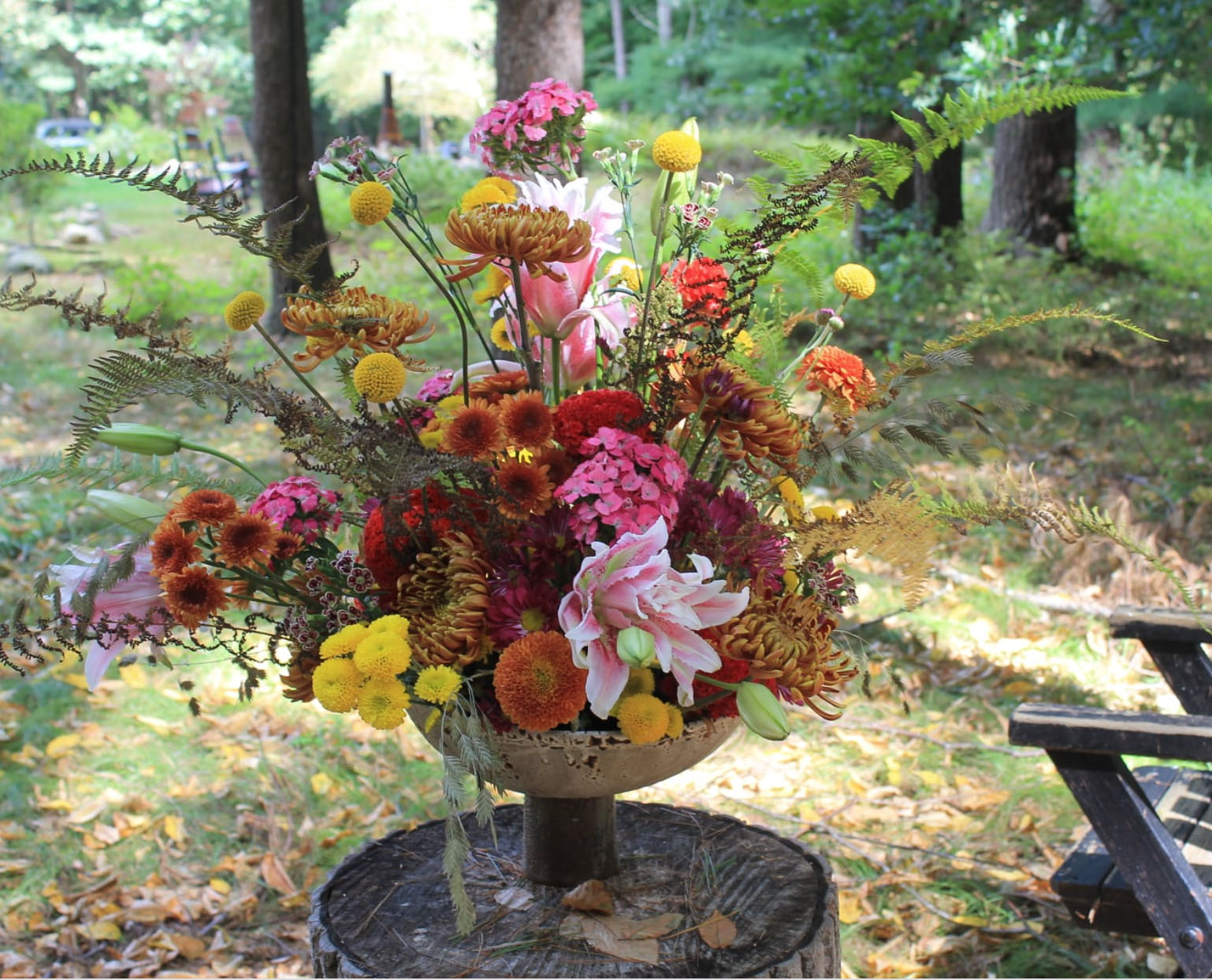
The Classics
Of course, going foam-free is not all about new inventions. Some foam-free floral mechanics have been around a while but are enjoying renewed popularity among professionals and hobbyists.
PIN FROGS
Also known as flower frogs or kenzan in the Japanese art form of ikebana, pin frogs are designed to hold flowers firmly in place. Much of the pin frog’s appeal rests in its easy-to-clean reusability and eco-friendly materials. Simply secure your pin frog to the bottom of your vessel using floral putty to keep it from moving as you design.
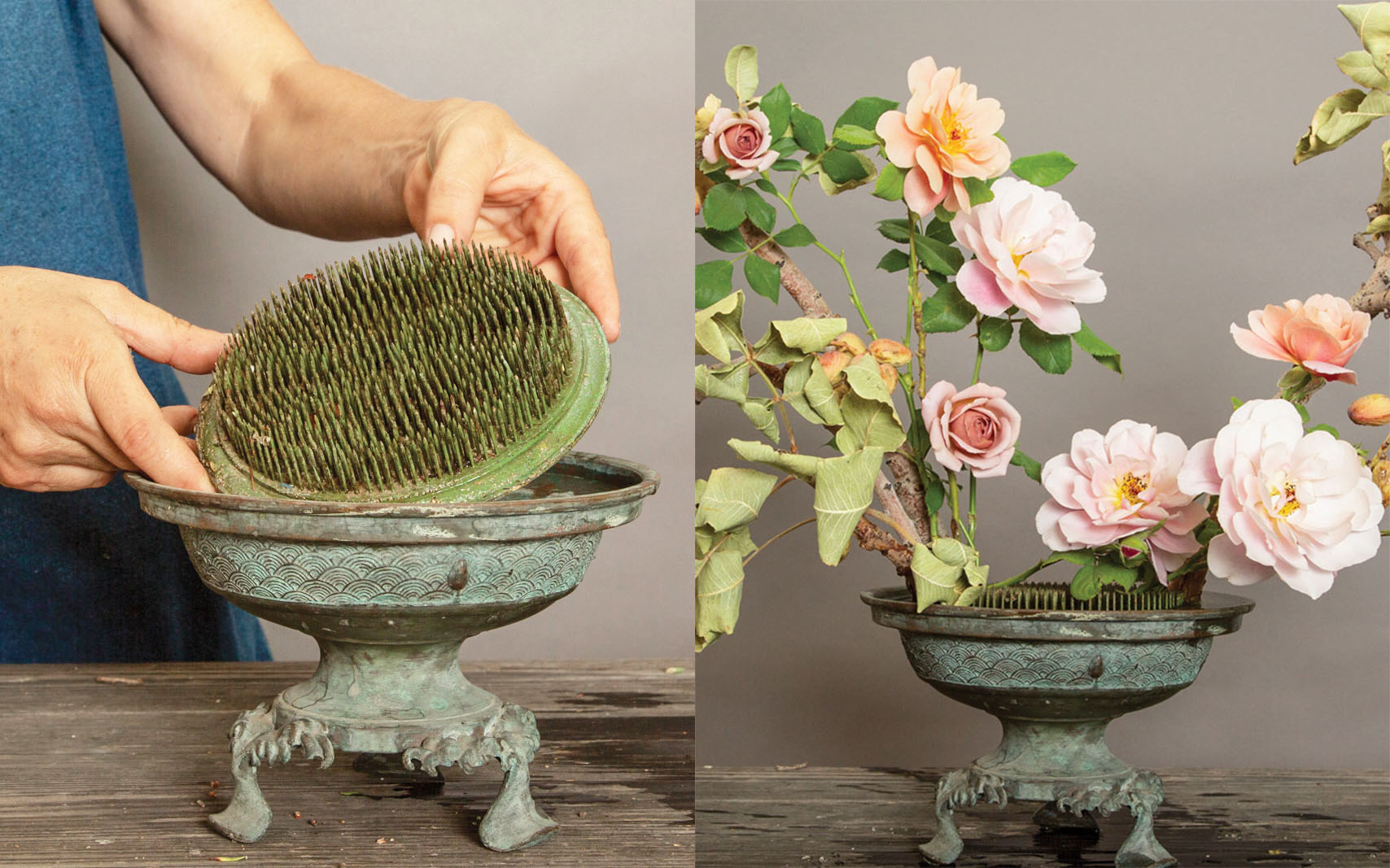
Photo by Shelly Strazis
Holly Vesecky of Hollyflora uses a large pin frog for her floral tutorial for FLOWER magazine.
At Blue Jasmine, located in Berkeley Heights, New Jersey, floral designer Paulina Nieliwocki of Blue Jasmine favors pin frogs, as well as a twist on the original, the pin cup, which also functions as a watertight vessel. “The three-inch pin cup from Harmony Harvest is my go-to flower frog,” Paulina says.

Photo courtesy of Harmony Harvest
Three-inch pin cup from Harmony Harvest
CHICKEN WIRE & TAPE GRIDS
When considering floral design mechanics, the choice may come down to cost. Two of the most cost-effective mechanics are chicken wire and waterproof floral tape. Both products are budget- and user-friendly, available in different colors, and considered ideal when creating straight-to-water arrangements. However, where they differ is in allotted flower openings, which are more open with chicken wire and more restrictive with tape, based on a pre-determined grid.
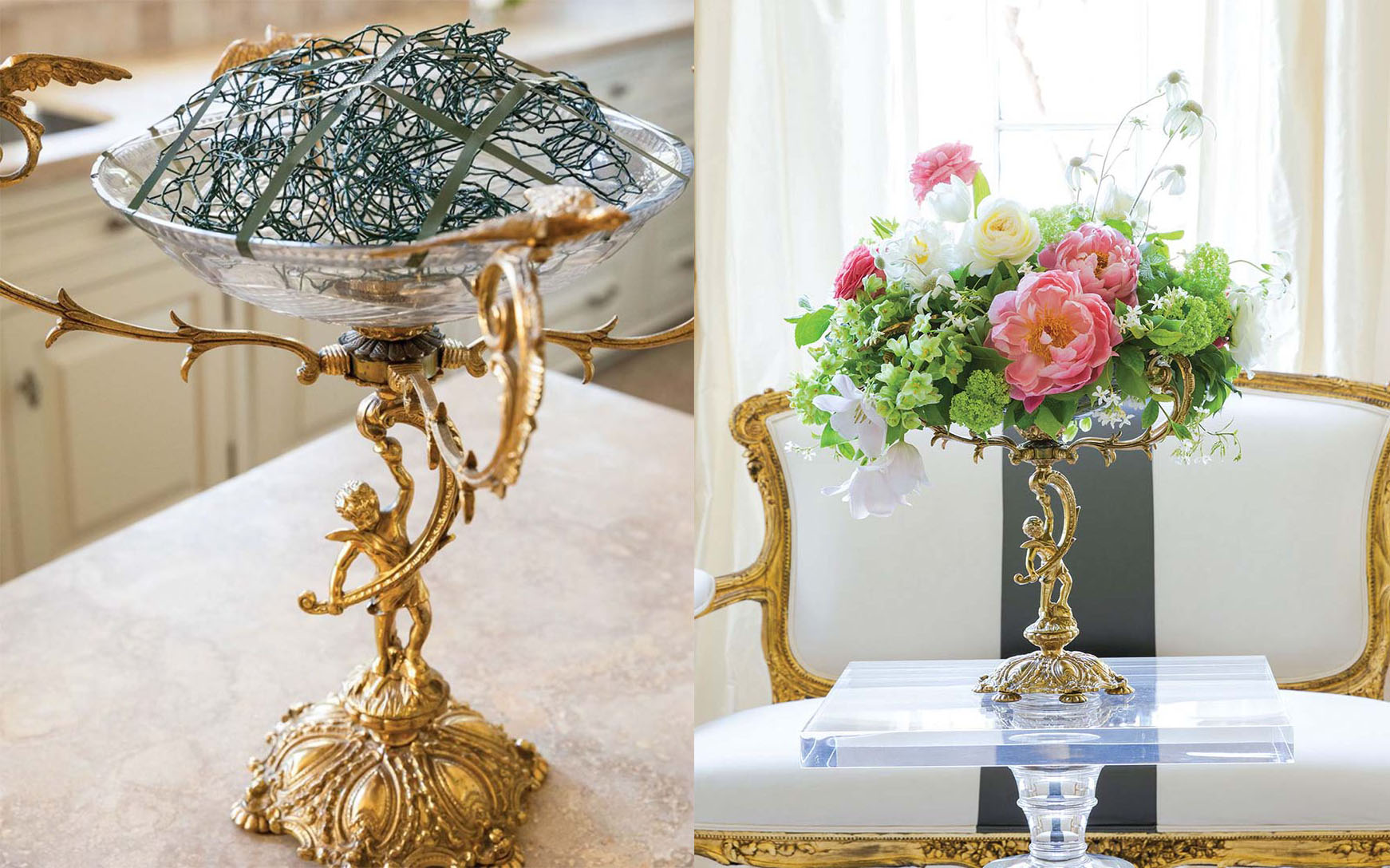
Photo by Sara Essex Bradley
“Don’t shy away from a shallow container!” says floral designer Destiny Pinson of Doris Ione, who uses chicken wire secured with floral tape in her floral tutorial for Flower magazine.
MIX, MATCH & BE CREATIVE
Many of Flower magazine’s floral tutorials use chicken wire and a floral tape grid in combination. However, feel free to experiment and mix-and-match these mechanics to find your own foam-free style.
As a regular user of pin frogs, New Jersey-based floral designer T.J. McGrath notes, “I almost always use a pin frog and chicken wire. I tried using a tape grid, and you can do it, but I prefer chicken wire and a frog. I feel like they allow you more freedom while designing.”
Across the country in Los Angeles, California, floral designer Maurice Harris, founder of Bloom & Plume and a judge on the HBO series Full Bloom, prefers flat floral wire for his designs. He says, “Cut a long piece of flat floral wire, and crumple it into loose folds inside the vase—it’s so easy and takes two seconds. Some designers use flat wire decoratively, but I use it functionally instead of a frog or floral foam.”

Photo by Jessica Sample
Maurice Harris’s 2015 floral tutorial for FLOWER magazine employs flat floral wire as a structural element.
Of course, the right floral foam alternative might depend on the scale and nature of your project, as Ingrid Carozzi attests. “For large-scale installations, we build structures with water sources,” she says. “For smaller-scale arrangements, a fully compostable method that I really love is the twig method [using twigs to build a structure inside a vessel to support stems]. Sometimes we use water tubes that we recycle. And every once in a while we also use floral wraps.”
Share your foam-free floral creations with Flower magazine on social media by tagging @flowermagazine and using the hashtag #flowermagazine, and tell us what mechanics you used.
By Brenda Silva


